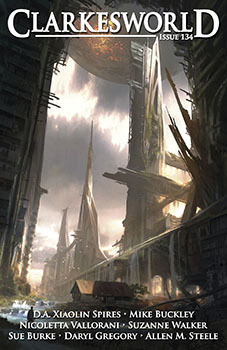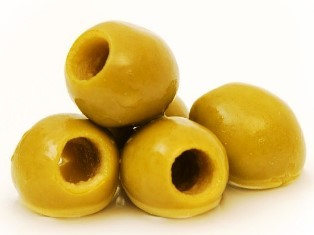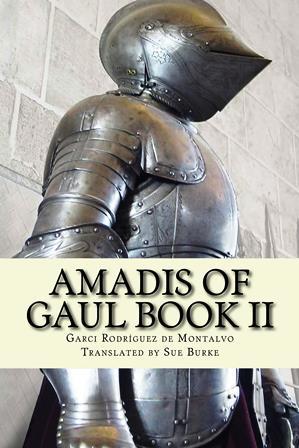Sue Burke's Blog, page 48
November 3, 2017
Minimalist plotting: a writing how-to
Are you a plotter or pantser? An architect or gardener? Do you plan and outline your writing projects, or do you just start writing and see what grows?
We all need more writing advice, don’t we? I offer some in this brief article as part of Red Sofa Literary (the literary agency that represents me) for its NaNoWriMo series.
https://redsofaliterary.com/2017/11/02/nanowrimo-day-2-minimalist-plotting/
— Sue Burke
We all need more writing advice, don’t we? I offer some in this brief article as part of Red Sofa Literary (the literary agency that represents me) for its NaNoWriMo series.
https://redsofaliterary.com/2017/11/02/nanowrimo-day-2-minimalist-plotting/
— Sue Burke
Published on November 03, 2017 07:06
November 2, 2017
“Who Won the Battle of Arsia Mons?” at Clarkesworld
 My story “Who Won the Battle of Arsia Mons?” is now available for your reading pleasure at Clarkesworld Magazine.
My story “Who Won the Battle of Arsia Mons?” is now available for your reading pleasure at Clarkesworld Magazine.The story is about a battle among robots inside the caldera of an extinct Martian volcano named Arsia Mons – because it is the most foolish and yet utterly logical thing I could think of that could happen involving robots on Mars.
— Sue Burke
Published on November 02, 2017 07:12
November 1, 2017
Writing prompts
Do writing prompts work? Yes, at least sometimes. They can help you warm up before writing, the way a baseball player will swing two bats or use a baseball doughnut. Or they can help you create an entire work, the way that a prompt about a special kind of wall led to my novel Semiosis.
But what kind of prompt is effective? All kinds. You can develop a story from many directions. Both simple and complex prompts work. And sometimes prompts fail, which doesn’t mean that you as a writer have failed. It just wasn’t a good match. If you plant that most noble of cacti, a saguero, in a lush rainforest, it won’t grow.

Pictures can be writing prompts. Write about being in the wrong place, like a saguero cactus in the rainforest.
Here are some prompts emphasizing different story elements. Feel free to use them any way you wish, to change anything about them to make them more useful to you, and if they result in a story, even better!
Character: the “who” of a story
• This is the kind of man who feels naked walking down the street because everyone else is wearing the rules of their lives for all to see.
• This woman habitually lies, even in her diary entries – possibly for a good reason.
Plot: “what happens?”
• A little girl’s invisible friends go away, and she decides to find them.
• Advanced social media algorithms allow ranking of character – helpful, trollish, petty, responsible, etc. – and someone is consumed with achieving the highest ranking possible.
Style: “how” to tell the story
• A listicle story: This is the perfect escape plan, and it has twelve steps.
• A one-act stage play that breaks the fourth wall: A squadron of soldiers prepares for a suicide mission.
Setting: “when and where”
• A bride at the altar is hoping that someone will object.
• The ghosts of the victims of a terrible tragedy have agreed to meet at the site one year later … and a year has passed.
Genre: the “why” that sets up reader expectations.
But as Samuel R. Delaney says in Shorter Views , “superb fiction must fulfill some of those expectations, and at the same time violate others.”
• In this fairy tale, a handsome prince is sent on a grueling quest by his evil fairy godmother, and little by little he comes to believe she did the right thing, so is she evil?
• This is a romance about a pair of actors hired to pretend to fall in love during a long pleasure cruise to entertain the passengers.
— Sue Burke
But what kind of prompt is effective? All kinds. You can develop a story from many directions. Both simple and complex prompts work. And sometimes prompts fail, which doesn’t mean that you as a writer have failed. It just wasn’t a good match. If you plant that most noble of cacti, a saguero, in a lush rainforest, it won’t grow.

Pictures can be writing prompts. Write about being in the wrong place, like a saguero cactus in the rainforest.
Here are some prompts emphasizing different story elements. Feel free to use them any way you wish, to change anything about them to make them more useful to you, and if they result in a story, even better!
Character: the “who” of a story
• This is the kind of man who feels naked walking down the street because everyone else is wearing the rules of their lives for all to see.
• This woman habitually lies, even in her diary entries – possibly for a good reason.
Plot: “what happens?”
• A little girl’s invisible friends go away, and she decides to find them.
• Advanced social media algorithms allow ranking of character – helpful, trollish, petty, responsible, etc. – and someone is consumed with achieving the highest ranking possible.
Style: “how” to tell the story
• A listicle story: This is the perfect escape plan, and it has twelve steps.
• A one-act stage play that breaks the fourth wall: A squadron of soldiers prepares for a suicide mission.
Setting: “when and where”
• A bride at the altar is hoping that someone will object.
• The ghosts of the victims of a terrible tragedy have agreed to meet at the site one year later … and a year has passed.
Genre: the “why” that sets up reader expectations.
But as Samuel R. Delaney says in Shorter Views , “superb fiction must fulfill some of those expectations, and at the same time violate others.”
• In this fairy tale, a handsome prince is sent on a grueling quest by his evil fairy godmother, and little by little he comes to believe she did the right thing, so is she evil?
• This is a romance about a pair of actors hired to pretend to fall in love during a long pleasure cruise to entertain the passengers.
— Sue Burke
Published on November 01, 2017 07:27
October 18, 2017
Olive skin?
 When I was a young and already avid reader, I saw someone described as having “olive skin.” This puzzled me. As far as I knew, most olives were green, and people weren’t green. There were also black olives, but no one was that color, either.
When I was a young and already avid reader, I saw someone described as having “olive skin.” This puzzled me. As far as I knew, most olives were green, and people weren’t green. There were also black olives, but no one was that color, either.So what does “olive skin” mean? Now that I’m older and have the riches of the internet at my beck and call, I did some research.
According to Straight Dope and Wise Geek, it means people with a vaguely greenish, golden, or yellowish undertone to their skin. Or maybe it means the stereotypical skin color of Mediterranean peoples who live in olive-growing areas. Or maybe it means people whose skin tone is neither cool nor warm but neutral. Or maybe it means people who tan easily.
Whatever it means, why use “olive skin” at all? I’m not the only person who has doubts. According to Wikipedia background talk, the expression might come from the color of olive oil. Some of Wikipedia’s volunteers are skeptical, querulous, and even derisive of the idea of “olive skin.” I think they have a point.
If I ever use “olive skin” in my own writing, I promise to be careful, perhaps with a Pantone reference to the precise color to avoid confusion. Pantone’s “golden olive” (similar to those olives in the photo) might be suitable for an alien life form’s skin color, but not for someone from Italy.
— Sue Burke
Published on October 18, 2017 07:35
October 11, 2017
Ready to bug out
 It’s become fashionable to have a bug-out bag, “a portable kit that normally contains the items one would require to survive for seventy-two hours,” dixit Wikipedia (so it must be true).
It’s become fashionable to have a bug-out bag, “a portable kit that normally contains the items one would require to survive for seventy-two hours,” dixit Wikipedia (so it must be true).In the corner of my office, I have a hiking staff and a sword. You can bug out to wherever you want, but I’m going through the portal into fantasyland. I’ve read the guidebook, and those are the essentials.
I’m prepared.
— Sue Burke
Published on October 11, 2017 08:15
October 4, 2017
Leaves fall down
 The air could not have been more still that autumn morning, yet a tree near my back door was losing its leaves. One by one, they fell of their own weight as the tree let go. At that becalmed moment, leaves were dropping to the ground.
The air could not have been more still that autumn morning, yet a tree near my back door was losing its leaves. One by one, they fell of their own weight as the tree let go. At that becalmed moment, leaves were dropping to the ground.Usually we think the wind sweeps the autumn leaves from trees, and maybe it provides an extra tug. But trees decide to shed their leaves at the moment they deem best. Though they seem almost inert, buffeted by wind, soaked by rain, and baked by sunshine, they control their fates as much as any of us. We, too, can be uprooted by disasters, attacked by illness, cut down by predators, and suffer thirst. Being mobile does not make us less vulnerable. Or less willful.
So on that chilly morning, I watched a tree prove that it was the master of its destiny. One by one, it clipped its bonds to its leaves, and they dropped off. The tree was taking action, and no one and nothing could stop it.
— Sue Burke
Also posted at my writing website: www.sue.burke.name
Published on October 04, 2017 07:53
September 27, 2017
The lion with a very shiny nose

You can find these two bronze lions guarding an apartment house around the corner from my home in the Edgewater neighborhood of Chicago.

Notice that one of them – only one – has a shiny nose. Passers-by and residents of the building have apparently been rubbing it. Why? Probably for good luck, like rubbing Lincoln’s nose on the bronze bust at his tomb in Springfield, Illinois.
Statues at , UCLA, the University of Maryland, Dubrovnik, Croatia – and no doubt many others – are similarly venerated.
But I think that the lion’s nose can bring us more than bring good luck. The Phrygian goddess Cybele rode a chariot pulled by lions, portrayed here in the fountain at Plaza de Cibeles in Madrid, Spain. (Notice the Spanish spelling of her name.)

As with Santa, a lion that has a very shiny nose could guide her chariot. According to legend, she arrives with wild music, wine, and a disorderly, ecstatic following.
I’m ready and waiting right around the corner, goddess. Bring your divine power (and wine) to Edgewater! We can supply the lions, wild music, and disorderly, ecstatic followers.
— Sue Burke
Published on September 27, 2017 07:02
September 20, 2017
Amadis of Gaul, Books I and II, now available
 As you may know, for several years I’ve been translating the medieval Spanish novel of chivalry, Amadis of Gaul, as a blog. I finally finished that this spring.
As you may know, for several years I’ve been translating the medieval Spanish novel of chivalry, Amadis of Gaul, as a blog. I finally finished that this spring.The novel was written as four “books,” each one the size of a modern novel. I’ve since been working on collecting the translation into books to self-publish, and since the whole thing would run more than a thousand pages, I’m doing it book by book.
Book II of Amadis of Gaul is now available as a paperback and Kindle ebook at Amazon.
It joins Book I, also available in paperback and Kindle formats.
Books III and IV are coming soon.
The blog will remain up in case you want to read the book for free, which you’re very welcome to do.
Why would you want to read it? Because this novel is a masterpiece. It inspired a century of best-selling sequels in seven languages and changed the way we think about knights, chivalry, damsels in distress, and courtly life in castles. During the Renaissance, it even led to cosplay!
Most of all, this book drove Don Quixote mad. What will it do to you?
— Sue Burke
Published on September 20, 2017 07:51
September 13, 2017
To be or not to be ... copulative
I love grammar, and here comes a grammar rant. I have seen (no links to protect the guilty) writerly advice about avoiding “to be” as a linking verb.
Actually, you should consider this advice. You want to use strong verbs in your writing. The verb “to be,” when used as a linking or copulative verb, merely connects or couples the subject with the predicate. It’s a weak verb. For example:
• Becky is an expert computer programmer.
• Your dog was well behaved.
• They were zombies.
While these are fine sentences, you might not want to use too many of them in a row. They merely describe things. There’s no action.
So far so good. But what about these sentences?
• Becky is working as an expert computer programmer.
• Your dog has been behaving well this morning.
• They were being eaten by zombies.
None of these sentences uses “to be” as a linking verb. Here, a form of “to be” is acting as a helping or auxiliary verb. Do not avoid using “to be” in these kinds of sentences.
In English, verbs have few forms, but we have many shades of meaning that we want to invoke. To do that, we use a variety of auxiliary verbs to show time, questions, negation, completion, repetition, willingness, possibility, or obligation. If you’re a native speaker, you can do all this without thinking about it – but you might not precisely understand how you’re using the language. You can easily fall prey to mistaken ideas if you don’t know grammar.
In the sentence, “Becky is working as an expert computer programmer,” the main verb is “to work.” The “is” in the sentence makes the verb tense present progressive, also called present continuous. It can be used in a variety of ways. In this case, it shows an ongoing action, what Becky is doing over a period of time.
“Your dog has been behaving well this morning” similarly shows your dog’s ongoing action, but during a specified period of time expressed by the present perfect continuous tense. It says that your dog was behaving well in the past and is continuing to behave well in the present, or at least until right now. English grammar allows us to make complex statements about when things happen.
Notice that both of the above sentences are active voice.
“They were being eaten by zombies” is passive voice and past progressive tense. The eating is being carried out on the subject of the sentence, “they,” and that’s what makes it passive: the subject receives the action. I have an inordinately long rant (a ten-part workshop, in fact) about identifying and properly using passive voice here, so right now I’ll just say that the main verb is “to eat,” and both “were” and “being” are helping verbs, not linking verbs.
So here’s my point: if you see a form of the verb “to be,” this might not indicate a copulative use. If you want to strengthen your writing, look a little deeper before you make any rash decisions. Don’t just circle every form of “to be” as a way to decide whether there are too many of them. There might be just the right amount if you’re trying to say something complex.
— Sue Burke
Actually, you should consider this advice. You want to use strong verbs in your writing. The verb “to be,” when used as a linking or copulative verb, merely connects or couples the subject with the predicate. It’s a weak verb. For example:
• Becky is an expert computer programmer.
• Your dog was well behaved.
• They were zombies.
While these are fine sentences, you might not want to use too many of them in a row. They merely describe things. There’s no action.
So far so good. But what about these sentences?
• Becky is working as an expert computer programmer.
• Your dog has been behaving well this morning.
• They were being eaten by zombies.
None of these sentences uses “to be” as a linking verb. Here, a form of “to be” is acting as a helping or auxiliary verb. Do not avoid using “to be” in these kinds of sentences.
In English, verbs have few forms, but we have many shades of meaning that we want to invoke. To do that, we use a variety of auxiliary verbs to show time, questions, negation, completion, repetition, willingness, possibility, or obligation. If you’re a native speaker, you can do all this without thinking about it – but you might not precisely understand how you’re using the language. You can easily fall prey to mistaken ideas if you don’t know grammar.
In the sentence, “Becky is working as an expert computer programmer,” the main verb is “to work.” The “is” in the sentence makes the verb tense present progressive, also called present continuous. It can be used in a variety of ways. In this case, it shows an ongoing action, what Becky is doing over a period of time.
“Your dog has been behaving well this morning” similarly shows your dog’s ongoing action, but during a specified period of time expressed by the present perfect continuous tense. It says that your dog was behaving well in the past and is continuing to behave well in the present, or at least until right now. English grammar allows us to make complex statements about when things happen.
Notice that both of the above sentences are active voice.
“They were being eaten by zombies” is passive voice and past progressive tense. The eating is being carried out on the subject of the sentence, “they,” and that’s what makes it passive: the subject receives the action. I have an inordinately long rant (a ten-part workshop, in fact) about identifying and properly using passive voice here, so right now I’ll just say that the main verb is “to eat,” and both “were” and “being” are helping verbs, not linking verbs.
So here’s my point: if you see a form of the verb “to be,” this might not indicate a copulative use. If you want to strengthen your writing, look a little deeper before you make any rash decisions. Don’t just circle every form of “to be” as a way to decide whether there are too many of them. There might be just the right amount if you’re trying to say something complex.
— Sue Burke
Published on September 13, 2017 08:12
September 7, 2017
Read two stories from “Spanish Women of Wonder”
 National Translation Month is September, and #NTM2017 has posted two short stories from the award-winning anthology of science fiction written by women, Spanish Women of Wonder. I translated those stories.
National Translation Month is September, and #NTM2017 has posted two short stories from the award-winning anthology of science fiction written by women, Spanish Women of Wonder. I translated those stories.“The Infestation” by Felicidad Martínez offers a humorous and thrilling military space opera involving evolved plants. “Techt” by Sofía Rhei is set in a semiotic dystopia with a touch of cyberpunk, recalling novels such as Fahrenheit 451 or 1984.
National Translation Month says, “The translator, Sue Burke, does a wonderful job of capturing these two distinct voices. We hope you’ll agree and you’ll check out this mesmerizing collection.”
You can get those two stories here:
http://nationaltranslationmonth.org/spanishwomenofwonder
— Sue Burke
Published on September 07, 2017 08:20



